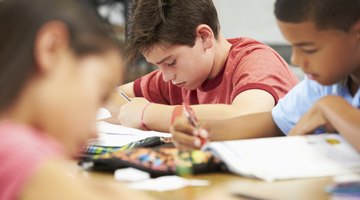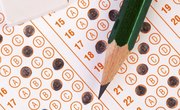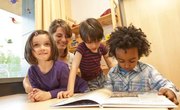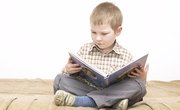What are DIBELS? The ultimate language arts goal is for students to be able to read books fluently and also comprehend what they read. While some students are reading before elementary school, true fluency may not occur until second, third or a later grade for some children. Teachers can't wait that long to assess a student's reading skills. The Dynamic Indicators of Basic Early Literacy Skills (DIBELS) help to identify whether a child will struggle with reading and to identify the child's current reading level. The program was developed at the University of Oregon and is used to help teachers identify struggling readers to provide early intervention by using the assessment results.
Phoneme Segmentation Fluency
Phoneme segmentation fluency is first assessed in kindergarten around mid-year to all students. This DIBELS assessment tests whether a child can break a word into its individual sounds. For example, the tester would give a student the word "cat" with the instruction that the student needs to say each individual sound in the word. Being able to say those individual sounds is an indicator for future reading success. According to DIBELS guidelines, by the end of kindergarten children should be able to segment 35 sounds in one minute. If their DIBELS scoring is lower than 35, the teacher should provide immediate, intensive intervention.
Letter Naming Fluency
DIBELS guidelines also specify that by the beginning of first grade, children need to be able to identify 37 letter names in one minute. If they fall below that score, teachers are trained to provide immediate, small group or individual intervention. Children are not tested again on letter names in future grades because they are expected to have mastered it by the beginning of first grade. However, teachers should provide intervention for students until they reach the goal of identifying letter names.
Nonsense Word Fluency
Nonsense word fluency is an assessment made up of nonsense words with students being assessed on their ability to read as many as they can in one minute. Assessments of nonsense word fluency begins in the winter of kindergarten with students needing to meet the DIBELS benchmarks score level to be on track for literacy skills. The goal for the student is to complete 13 or more correct answers. If this goal is not reached, the child may be placed in a small group with the teacher or teaching assistant to practice letter sounds. By the end of kindergarten, the child's nonsense word fluency goal increases to 25. Again, the teacher should provide interventions for the children who fall below this goal level. Students continue to be assessed until the beginning of second grade. First grade goals fall, winter and spring are 24, 50 and 50 respectively. At the beginning of second grade, students still need to be at or above 50 with intervention provided for children below that until they reach goals.
DIBELS Oral Reading Fluency
Oral reading fluency assessment tests students on how many words they can read in one minute from a grade-level passage. Children who meet the goal are on track for reading success and the ability to comprehend text. Each grade has an oral reading fluency goal with testing that begins in the middle of first grade. At that point, a child reading below 20 words in a minute must receive immediate intervention. By the end of first grade they are at risk if they are reading below 40 words. Oral reading fluency continues into second grade with DIBELS oral reading fluency testing conducted three times a year. At the beginning of the second grade year, the student oral reading fluency goal is 44 words per minute, the mid-year goal is 68 and the end-of-year goal is 90 words per minute. Third grade goals are 77, 92 and 110 at the beginning, middle and end-of-year points respectively. Scores below these levels are red flags indicating that the child may need reading intervention.
Related Articles
References
Writer Bio
Lori Furgerson began writing for an educational company in 2005. She was a classroom teacher for 12 years and became a national literacy consultant, traveling the country to work with state departments, school districts and at the school level to improve literacy instruction. She holds a Bachelor of Arts in liberal studies from California State University at Northridge.











